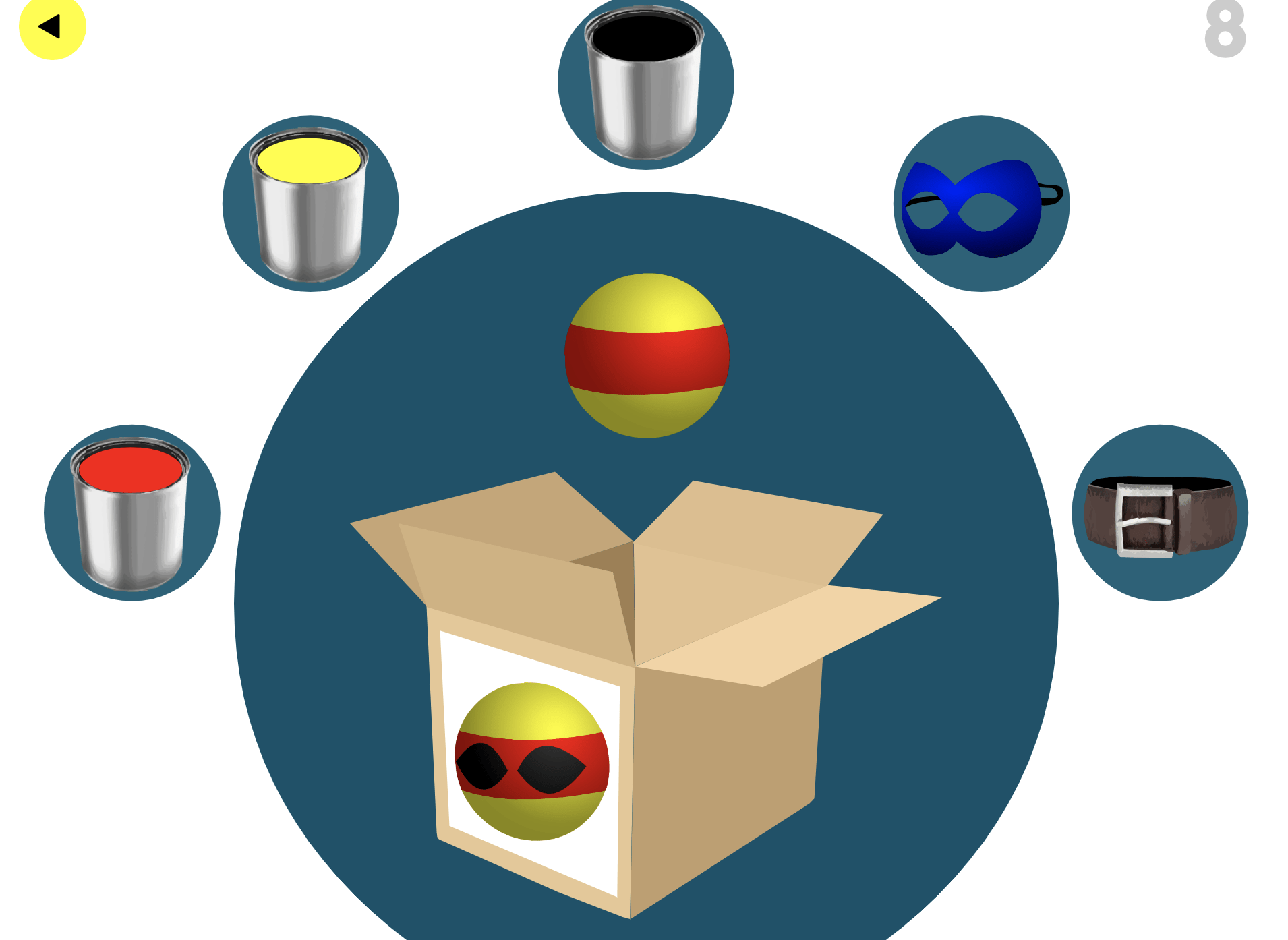
This week I played Factory Balls, a Bart Bonte puzzle game developed in 2007. It is an electronic game that can be played on a mobile device or desktop. The difficulty of the puzzles make the target audience for this game middle school and older.
The mechanics of this game are quite simple. You are given a set of materials — paint cans, and objects to cover the ball. Every time you click on an object, you put the ball in that object. For instance, if you select the yellow paint, the ball is dipped in yellow. If you click on the belt, the belt is attached to the ball. A short tutorial was given at the beginning of the game, which was helpful in quickly understanding such mechanics.
The mechanics of Factory Balls create an interesting dynamic, as the non-paint objects act as barriers to the paint. For instance, if you dip the ball in red and then attach a belt to the ball before dipping it in yellow, removing the belt will reveal a red stripe that was preserved by the belt. Careful ordering of selecting each object will create the desired ball, displayed on the front of the box. These lead to particular aesthetics of the game — though there is no opponent besides the game itself (player interaction pattern: single player versus game), the player becomes invested in defeating each puzzle. There is a moment of satisfaction felt when removing the final items to reveal the successfully painted ball. The mechanics are really at the core of this game, and mastering how to utilize them to your advantage (i.e., which order to use the objects in) is key to beating each puzzle.

Utilizing the belt creates a stripe on the ball
The main type of fun in this game is challenge. Each individual puzzle is like it’s own obstacle course. Factory Balls is successful in achieving this, particularly as the puzzles increase in difficulty each round.
While the objective of each puzzle in Factory Balls is clear (paint the ball so that it matches the one on the box), the outcome is not. In the top right corner of the puzzle, a number is displayed to show the player what puzzle they are on. But how many puzzles are there total? Changing “5” to be “5/100” for instance would make the overall goal more clear, and give the player more incentive to keep playing. I got stuck on puzzle 8, and because I had no sense of how close I was to beating the entire game, I just gave up. This is an area of improvement for Factory Balls.

“5” in the top right corner indicates what puzzle the player is on
Overall, I really enjoyed this game. The mechanics are relatively simple, making the learning curve small. Though there are only a few objects provided for each puzzle, the designs on the balls get increasingly complex. This added a nice level of difficulty to the puzzles that kept me engaged throughout gameplay.


